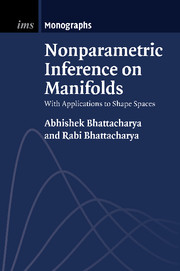Refine search
Actions for selected content:
48202 results in Computer Science
FOUNDATIONS AS TRUTHS WHICH ORGANIZE MATHEMATICS
-
- Journal:
- The Review of Symbolic Logic / Volume 6 / Issue 1 / March 2013
- Published online by Cambridge University Press:
- 09 May 2012, pp. 76-86
- Print publication:
- March 2013
-
- Article
- Export citation
THE GENETIC VERSUS THE AXIOMATIC METHOD: RESPONDING TO FEFERMAN 1977
-
- Journal:
- The Review of Symbolic Logic / Volume 6 / Issue 1 / March 2013
- Published online by Cambridge University Press:
- 09 May 2012, pp. 24-51
- Print publication:
- March 2013
-
- Article
- Export citation
JFP volume 22 issue 2 Cover and Front matter
-
- Journal:
- Journal of Functional Programming / Volume 22 / Issue 2 / March 2012
- Published online by Cambridge University Press:
- 09 May 2012, pp. f1-f2
-
- Article
-
- You have access
- Export citation
Macros that Work Together: Compile-time bindings, partial expansion, and definition contexts
- Part of
-
- Journal:
- Journal of Functional Programming / Volume 22 / Issue 2 / March 2012
- Published online by Cambridge University Press:
- 09 May 2012, pp. 181-216
-
- Article
-
- You have access
- Export citation
Modeling in Event-B – System and Software EngineeringJean-Raymond Abrial Cambridge University Press, May 2010 ISBN-10: 0521895561
-
- Journal:
- Journal of Functional Programming / Volume 22 / Issue 2 / March 2012
- Published online by Cambridge University Press:
- 09 May 2012, pp. 217-219
-
- Article
-
- You have access
- Export citation
Manipulating accumulative functions by swapping call-time and return-time computations*
- Part of
-
- Journal:
- Journal of Functional Programming / Volume 22 / Issue 3 / May 2012
- Published online by Cambridge University Press:
- 08 May 2012, pp. 275-299
-
- Article
-
- You have access
- Export citation
Static analysis of Biological Regulatory Networks dynamics using abstract interpretation
-
- Journal:
- Mathematical Structures in Computer Science / Volume 22 / Issue 4 / August 2012
- Published online by Cambridge University Press:
- 08 May 2012, pp. 651-685
-
- Article
- Export citation
Extending modal transition systems with structured labels
-
- Journal:
- Mathematical Structures in Computer Science / Volume 22 / Issue 4 / August 2012
- Published online by Cambridge University Press:
- 08 May 2012, pp. 581-617
-
- Article
- Export citation
A duality between exceptions and states
-
- Journal:
- Mathematical Structures in Computer Science / Volume 22 / Issue 4 / August 2012
- Published online by Cambridge University Press:
- 08 May 2012, pp. 719-722
-
- Article
- Export citation

Nonparametric Inference on Manifolds
- With Applications to Shape Spaces
-
- Published online:
- 05 May 2012
- Print publication:
- 05 April 2012
Getting a Directed Hamilton Cycle Two Times Faster
-
- Journal:
- Combinatorics, Probability and Computing / Volume 21 / Issue 5 / September 2012
- Published online by Cambridge University Press:
- 04 May 2012, pp. 773-801
-
- Article
- Export citation
Recent advances in methods of lexical semantic relatedness – a survey
-
- Journal:
- Natural Language Engineering / Volume 19 / Issue 4 / October 2013
- Published online by Cambridge University Press:
- 04 May 2012, pp. 411-479
-
- Article
- Export citation
RSL volume 5 issue 2 Cover and Back matter
-
- Journal:
- The Review of Symbolic Logic / Volume 5 / Issue 2 / June 2012
- Published online by Cambridge University Press:
- 04 May 2012, pp. b1-b3
- Print publication:
- June 2012
-
- Article
-
- You have access
- Export citation
RSL volume 5 issue 2 Cover and Front matter
-
- Journal:
- The Review of Symbolic Logic / Volume 5 / Issue 2 / June 2012
- Published online by Cambridge University Press:
- 04 May 2012, pp. f1-f4
- Print publication:
- June 2012
-
- Article
-
- You have access
- Export citation
Slopes of the U7 operator acting on a space of overconvergent modular forms
- Part of
-
- Journal:
- LMS Journal of Computation and Mathematics / Volume 15 / May 2012
- Published online by Cambridge University Press:
- 01 May 2012, pp. 113-139
-
- Article
-
- You have access
- Export citation
Condensation of homomorphism spaces
- Part of
-
- Journal:
- LMS Journal of Computation and Mathematics / Volume 15 / May 2012
- Published online by Cambridge University Press:
- 01 May 2012, pp. 140-157
-
- Article
-
- You have access
- Export citation
Groups acting simply transitively on vertex sets of hyperbolic triangular buildings
- Part of
-
- Journal:
- LMS Journal of Computation and Mathematics / Volume 15 / May 2012
- Published online by Cambridge University Press:
- 01 May 2012, pp. 101-112
-
- Article
-
- You have access
- Export citation
On the equations a2−2b6=cp and a2−2=cp
- Part of
-
- Journal:
- LMS Journal of Computation and Mathematics / Volume 15 / May 2012
- Published online by Cambridge University Press:
- 01 May 2012, pp. 158-171
-
- Article
-
- You have access
- Export citation
